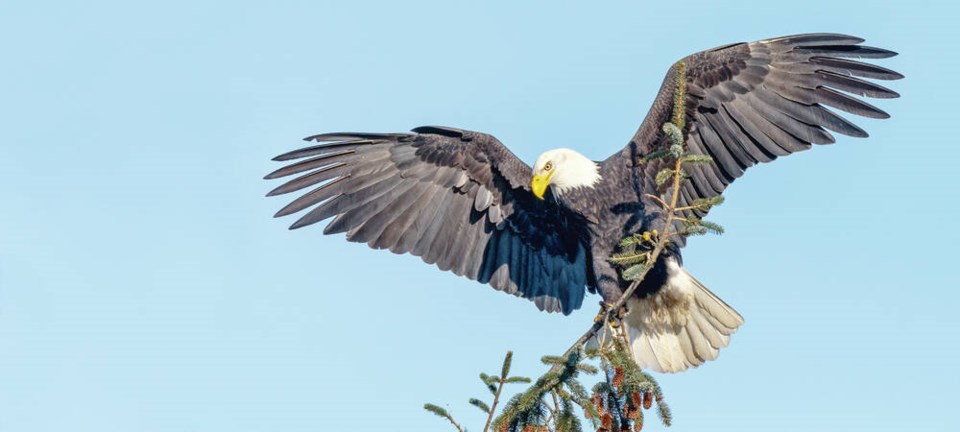A crowdfunding campaign is underway to create Vancouver Island’s first eagle sanctuary in an estuary near Qualicum Beach.
The B.C. Parks Foundation hopes to buy 18 acres of land in the French Creek estuary to join five acres of existing parks land managed by the Regional District of Nanaimo, creating a 23-acre nature reserve for bald eagles.
The undeveloped property is located between Qualicum Beach and Parksville, bordered by the Island Highway to the south, Columbia Drive to the west, Viking Way to the north and French Creek to the east.
The B.C. Parks Foundation — the official charitable partner of B.C. Parks — is partnering with the Regional District of Nanaimo, Save Estuary Land Society, Friends of French Creek Conservation Society and Qualicum and Snaw-Naw-As First Nations on the effort.
It has already raised 94 per cent of the land’s $5.18-million appraisal value and just has to raise less than $300,000 by April 10. The property, which is mainly forested with large trees, is owned by one landowner.
The B.C. Parks Foundation notes southern B.C. and the Inside Passage sustain most of the eagles of western North America for six or more months each year.
Resident eagles are joined every year by an estimated 35,000 to 50,000 eagles from northern B.C., Alaska and the Yukon. The northern eagles make their way to feeding grounds on Vancouver Island and the Fraser Valley on what is called the Pacific Flyway, a major north-south route that migratory birds take that stretches from Alaska to the Patagonia region in South America.
The birds leave as their food supply freezes, typically arriving here in early October. They stay over the winter and leave in February.
“We desperately need safe feeding sites for them,” said David Hancock, international eagle expert and founder of the Surrey-based Hancock Wildlife Foundation.
Resident and transient eagles alike feast on a diverse array of food sources in the estuary and the nearby Salish Sea, including herring and hake. At certain times of the year, high winds and surging waves dislodge Gaper clams in the area in front of the estuary, tossing them onshore and providing a feast for eagles and other wildlife.
The resident eagles’ survival relies heavily on having a suitable habitat with mature trees for nesting. As mature and towering trees continue to be harvested for lumber or be cleared to make way for residential or commercial development, there are fewer places where eagles can live, according to the French Creek Estuary Society.
The estuary is habitat for other species at risk, including peregrine falcons, great blue herons, marbled murrelets, northern red-legged frogs, western toads and Townsend’s big-eared bats. Animals such as beavers, otters, owls, deer, bears, cougars and other migratory birds also rely on the area.
Montreal-based Age of Union, a non-profit environmental organization, has pledged $1 million in matching funds toward the project. “This is an exciting and symbolic project, and I am honoured to join other British Columbians, including local First Nations, who are supporting it,” said Dax Dasilva, who heads the organization.
If enough money is raised to purchase the property, the Regional District of Nanaimo will work with the B.C. Parks Foundation to manage the ecological area as a nature preserve in perpetuity.



